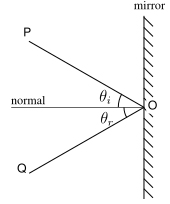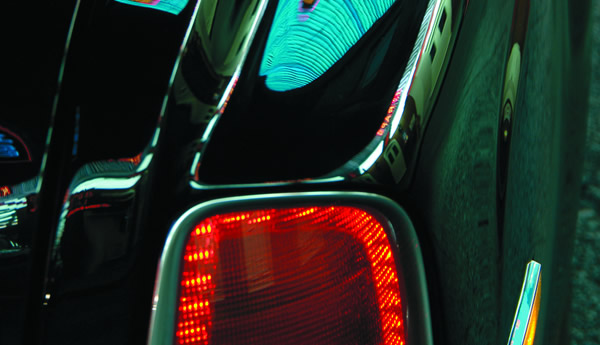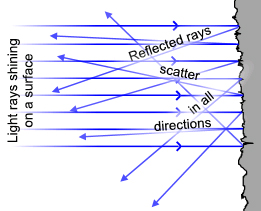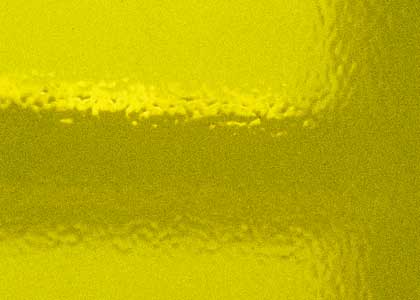Detailing Trinity: Claying, Polishing, and Waxing your way to a proper finish
#1
Former Vendor of MBWorld
Thread Starter
Join Date: Sep 2006
Location: Southern California
Posts: 174
Likes: 0
Received 0 Likes
on
0 Posts
NA
Detailing Trinity: Claying, Polishing, and Waxing your way to a proper finish
In religion, Trinity refers to Father, Son, and Holy Ghost. In culinary terms, Trinity refers to the base of Celery, Onions, and Bell Peppers for Creole dishes such as Gumbo. And now, in the detailing world, Trinity refers to the three steps that are the foundation of a properly exterior detailed vehicle. The three steps are Clay, Polish, and Wax. A few years ago during a tech session, I was asked what is the single most important concept to remember for a DIY detailer? I gave it some thought and responded that there was no single concept that was important, rather a few steps to a proper exterior finish. After watching countless hours of cooking shows on FoodTV, one of my passions next to detailing is cooking, I stumbled on an episode of Emeril Live and he was talking about Trinity as it relates to making gumbo. I then realized, why not relate to Trinity in detailing as the foundation of a proper exterior detail. Because no matter what brand of products you use, as long as the PROCESS is followed, the DIY detailer is in excellent shape. So what exactly is Trinity? In simple terms, it’s the proper technique of cleaning, conditioning, and protecting the exterior finish. Trinity is the process that follows a good wash. It’s usually the missing link for many DIY detailers. So here’s the process in detail.
Step 1:
Claying - Up until the early 90s, most consumers, and some detailers, hadn’t even heard of a little bar of putty-like material called clay. In its simplest explanation, clay is quartz crystals suspended in a plasticizer. How clay works is pretty simple in concept but ingenious in theory. Imagine particles on the paint surface that cannot be removed just by washing alone;embedded contaminants such as brake dust, acid rain deposit, tree sap, tar, etc. These particles cannot be washed off. Using a lubricant spray, you form the clay into a pancake. You then spray the paint surface with the clay lubricant and then begin rubbing the paint in a side-to-side motion with the actual clay. As you’re rubbing the paint, the clay is beginning to sheer off the particles on the paint, and in the pores of the paint, with every swipe. You can tell the clay is working by hearing and feeling the paint. Once the paint becomes smooth and quiet, you know the job is done and you move on to the rest of the car. You can clay paint, glass, chrome, etc. Just remember that there are different grades of clay and their aggressiveness varies. Try to use the most gentle clay to get the job done. The more aggressive clays contain quartz crystals that are like a ball with spikes. The more gentle clays have stop-sign shaped crystals that basically don’t CUT like the sharp ball crystals. Once you’ve clayed, you’ve got the texture part of the proper detail complete.
Step 2:
Polishing – This step can arguably be the most important step of all since this is where all the magic happens. A lot is happening during this process. If you’ve ever looked at your paint in direct sunlight and saw light scratches, what may look like a spider web, haziness, etching from bird droppings, you see imperfections that can all be helped with polishing. To fully understand what a polish does, we must understand what polishes are trying to fix. On a perfect paint surface, light should reflect back. According to Wikipedia, Specular reflection is the perfect, mirror-like reflection of light (or sometimes other kinds of wave) from a surface, in which light from a single incoming direction (a ray) is reflected into a single outgoing direction. Such behavior is described by the law of reflection, which states that the direction of incoming light (the incident ray), and the direction of outgoing light reflected (the reflected ray) make the same angle with respect to the surface normal, thus the angle of incidence equals the angle of reflection; this is commonly stated as θi = θr.


This is in contrast to diffuse reflection, where incoming light is reflected in a broad range of directions. The most familiar example of the distinction between specular and diffuse reflection would be glossy and matte paints. While both exhibit a combination of specular and diffuse reflection, matte paints have a higher proportion of diffuse reflection and glossy paints have a greater proportion of specular reflection. Very highly polished surfaces, such as high quality mirrors, can exhibit almost perfect specular reflection.


So basically, if the surface is perfectly flat, light can reflect back properly giving you a mirror image of the subject. But if there are imperfections such as swirls, spider-webbing, orange peel, or oxidation as it relates to paint, light is refracted and the subject is distorted. Next time, compare anything that is being reflected on the glass of your car to the same subject on the paint of your car. The results are remarkable and you can see the difference between reflection and refraction. There are many different grades of polish and quality will vary as well. There are polishes that legitimately correct the imperfection, this means it removes and not hides, and other polishes fill the imperfections. Neither one is best in every scenario. Let’s assume you have a 1930 Bugatti and it’s your job to restore the paint back to the best it can look without repainting. Well, in my opinion, you want to keep as much of the original paint as possible, while bringing out the brilliance in the lacquer. Each detailer will vary in his/her polishing process, but in my opinion, using a mild polish to remove light oxidation and rejuvenating the paint with essential oils is more important than removing precious paint to get rid of imperfections. We’re looking for the natural patina in the paint, nothing artificial. An almost 80 year-old automotive jewel shouldn’t look like it rolled out of the paint booth yesterday. In contrast, say you have a 1960s Hot Rod that is restored and painted by Chip Foose, Pete Santini, or Junior Conway. These amazing works of art on wheels can have multiple layers of paint and clear coat. So imperfections can be sanded and polished to a mirror-like state unmatched by most production paint jobs. After wetsanding the paint, these cars will require a more aggressive polish, even compounding, to get rid of the sand marks to bring out the true beauty of the painter’s skilled hands. The polishes used here are those that will legitimately remove imperfections and not hide them.
Step 3:
Waxing – This step protects and adds another dimension to the paint. The oldest form of wax, dating back to Egypt, is Carnauba. This is the waxy layer that is on the leaves of a tree that is further processed and purified for applications in pharmaceutical, cosmetic, and automotive industries to name a few.


Carnauba can come in many forms such as wax or sap. The newer form of wax that utilizes modern technology is a polymer-based product. These new waxes are easier to use, less expensive, and last longer than some traditional carnauba waxes. The difference between the two waxes is primarily in the “look”. Synthetic waxes have a more sterile look but have tremendous shine and gloss. Natural carnauba waxes have much greater depth and clarity while having gloss and shine, just not as much as the synthetics. Neither one is better than the other, it all comes down to which “look” you prefer. The best advice I can give you is find a “look” you like and ask whomever detailed that car what he/she used. Then follow his/her steps on how they achieved that “look”. I hope this sheds some light on what I think is the most important concept in exterior paint detailing. Please feel free to comment and ask any questions you have.
Step 1:
Claying - Up until the early 90s, most consumers, and some detailers, hadn’t even heard of a little bar of putty-like material called clay. In its simplest explanation, clay is quartz crystals suspended in a plasticizer. How clay works is pretty simple in concept but ingenious in theory. Imagine particles on the paint surface that cannot be removed just by washing alone;embedded contaminants such as brake dust, acid rain deposit, tree sap, tar, etc. These particles cannot be washed off. Using a lubricant spray, you form the clay into a pancake. You then spray the paint surface with the clay lubricant and then begin rubbing the paint in a side-to-side motion with the actual clay. As you’re rubbing the paint, the clay is beginning to sheer off the particles on the paint, and in the pores of the paint, with every swipe. You can tell the clay is working by hearing and feeling the paint. Once the paint becomes smooth and quiet, you know the job is done and you move on to the rest of the car. You can clay paint, glass, chrome, etc. Just remember that there are different grades of clay and their aggressiveness varies. Try to use the most gentle clay to get the job done. The more aggressive clays contain quartz crystals that are like a ball with spikes. The more gentle clays have stop-sign shaped crystals that basically don’t CUT like the sharp ball crystals. Once you’ve clayed, you’ve got the texture part of the proper detail complete.
Step 2:
Polishing – This step can arguably be the most important step of all since this is where all the magic happens. A lot is happening during this process. If you’ve ever looked at your paint in direct sunlight and saw light scratches, what may look like a spider web, haziness, etching from bird droppings, you see imperfections that can all be helped with polishing. To fully understand what a polish does, we must understand what polishes are trying to fix. On a perfect paint surface, light should reflect back. According to Wikipedia, Specular reflection is the perfect, mirror-like reflection of light (or sometimes other kinds of wave) from a surface, in which light from a single incoming direction (a ray) is reflected into a single outgoing direction. Such behavior is described by the law of reflection, which states that the direction of incoming light (the incident ray), and the direction of outgoing light reflected (the reflected ray) make the same angle with respect to the surface normal, thus the angle of incidence equals the angle of reflection; this is commonly stated as θi = θr.


This is in contrast to diffuse reflection, where incoming light is reflected in a broad range of directions. The most familiar example of the distinction between specular and diffuse reflection would be glossy and matte paints. While both exhibit a combination of specular and diffuse reflection, matte paints have a higher proportion of diffuse reflection and glossy paints have a greater proportion of specular reflection. Very highly polished surfaces, such as high quality mirrors, can exhibit almost perfect specular reflection.


So basically, if the surface is perfectly flat, light can reflect back properly giving you a mirror image of the subject. But if there are imperfections such as swirls, spider-webbing, orange peel, or oxidation as it relates to paint, light is refracted and the subject is distorted. Next time, compare anything that is being reflected on the glass of your car to the same subject on the paint of your car. The results are remarkable and you can see the difference between reflection and refraction. There are many different grades of polish and quality will vary as well. There are polishes that legitimately correct the imperfection, this means it removes and not hides, and other polishes fill the imperfections. Neither one is best in every scenario. Let’s assume you have a 1930 Bugatti and it’s your job to restore the paint back to the best it can look without repainting. Well, in my opinion, you want to keep as much of the original paint as possible, while bringing out the brilliance in the lacquer. Each detailer will vary in his/her polishing process, but in my opinion, using a mild polish to remove light oxidation and rejuvenating the paint with essential oils is more important than removing precious paint to get rid of imperfections. We’re looking for the natural patina in the paint, nothing artificial. An almost 80 year-old automotive jewel shouldn’t look like it rolled out of the paint booth yesterday. In contrast, say you have a 1960s Hot Rod that is restored and painted by Chip Foose, Pete Santini, or Junior Conway. These amazing works of art on wheels can have multiple layers of paint and clear coat. So imperfections can be sanded and polished to a mirror-like state unmatched by most production paint jobs. After wetsanding the paint, these cars will require a more aggressive polish, even compounding, to get rid of the sand marks to bring out the true beauty of the painter’s skilled hands. The polishes used here are those that will legitimately remove imperfections and not hide them.
Step 3:
Waxing – This step protects and adds another dimension to the paint. The oldest form of wax, dating back to Egypt, is Carnauba. This is the waxy layer that is on the leaves of a tree that is further processed and purified for applications in pharmaceutical, cosmetic, and automotive industries to name a few.


Carnauba can come in many forms such as wax or sap. The newer form of wax that utilizes modern technology is a polymer-based product. These new waxes are easier to use, less expensive, and last longer than some traditional carnauba waxes. The difference between the two waxes is primarily in the “look”. Synthetic waxes have a more sterile look but have tremendous shine and gloss. Natural carnauba waxes have much greater depth and clarity while having gloss and shine, just not as much as the synthetics. Neither one is better than the other, it all comes down to which “look” you prefer. The best advice I can give you is find a “look” you like and ask whomever detailed that car what he/she used. Then follow his/her steps on how they achieved that “look”. I hope this sheds some light on what I think is the most important concept in exterior paint detailing. Please feel free to comment and ask any questions you have.








